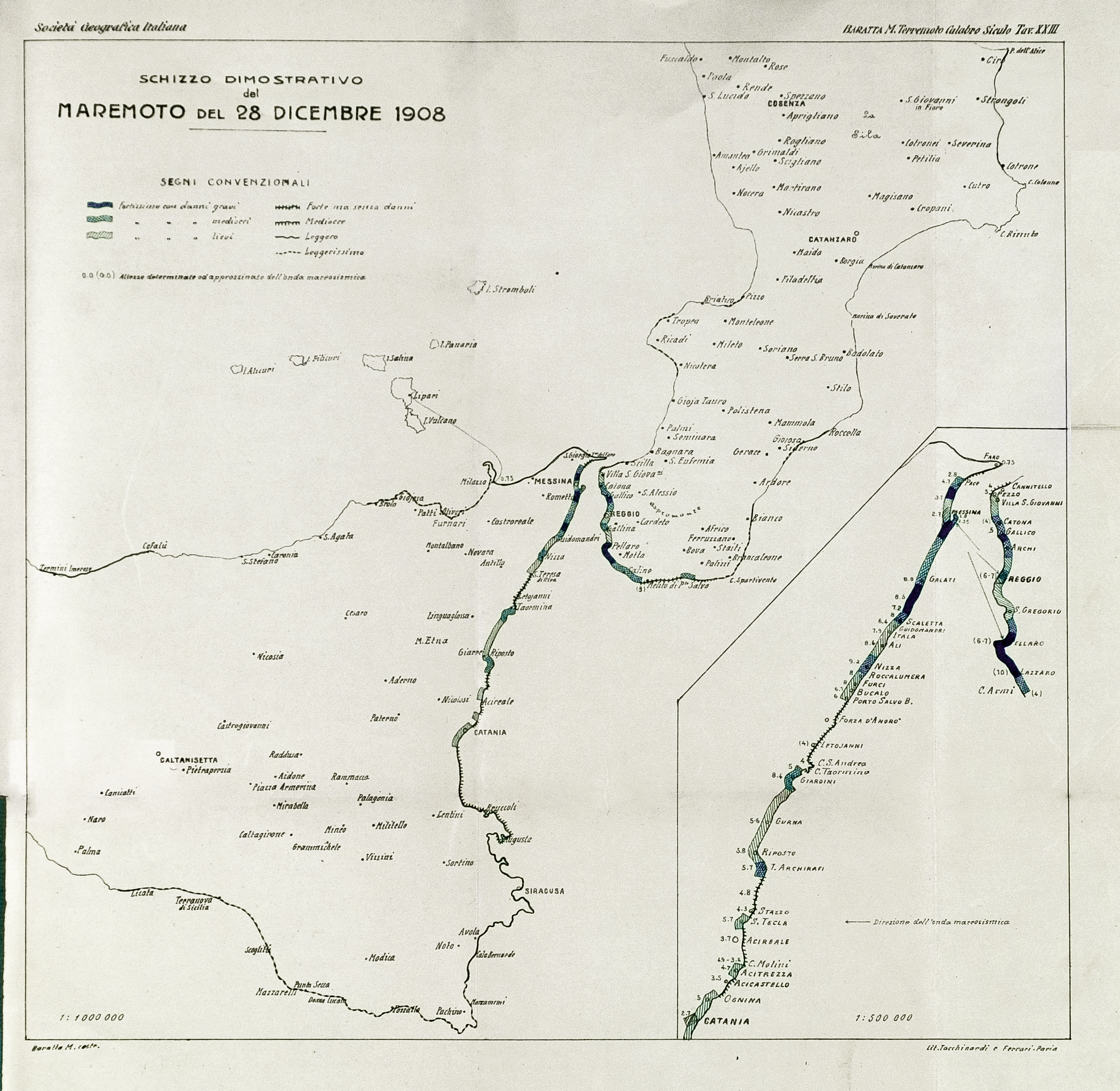 Summary tsunami observation map of December 28, 1908 extracted from the volume "La catastrofe sismica calabro messinese (28 dicembre 1908) - Relazione alla Società Geografica Italiana" by Baratta. .
Summary tsunami observation map of December 28, 1908 extracted from the volume "La catastrofe sismica calabro messinese (28 dicembre 1908) - Relazione alla Società Geografica Italiana" by Baratta. .
December 28 is one of the most important anniversaries for Italian and world seismology.
At 05:20 in the morning of December 28, 1908, one of the strongest earthquakes in the Mediterranean, hit Messina, Reggio Calabria and the surrounding territory, also generating a tsunami that increased the damage and the fatalities. The phenomena generated by the earthquake and by the tsunami are accurately described in articles published in 2020 and 2015 (INGVterremoti - In italian).
Today we want to remember one of the most important contributions to the study of the 1908 earthquake and tsunami study, the one by Mario Baratta, an important Italian seismologist active between the end of the nineteenth century and the first decades of the twentieth century. In 1910 Baratta went to Messina and Reggio Calabria a few days after the event, sent by the Italian Geographical Society, and published his study in a volume of over 400 pages: "The seismic catastrophe in Calabria and Messina (December 28, 1908) Report to the Italian Geographical Society.
Among the many photographs and sketches contained in Baratta's book, we show here his summary tsunami observations map. Although not the most up-to-date and complete map of the tsunami, Baratta's study represents a very interesting and detailed compendium of the phenomenon knowledge state in the following months following the event. It can be noted, for example, the extreme variability of damage (main map) and of maximum wave heights (bottom right box) observed along the Sicilian and Calabrian coasts, as observed in many other tsunamis in the world. This wide variability is mainly due to seafloor conformation and local topography.
Studies on the 1908 earthquake and tsunami have been conducted by various geologists and seismologists of the time, not only Italian, including Giuseppe Mercalli, Giovanni Platania and the Japanese seismologist Fusakichi Omori.


